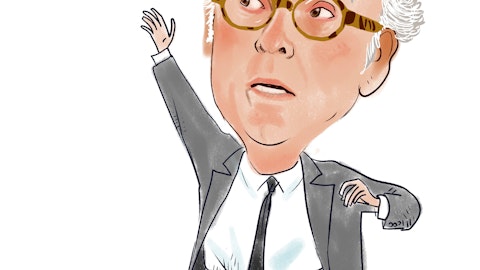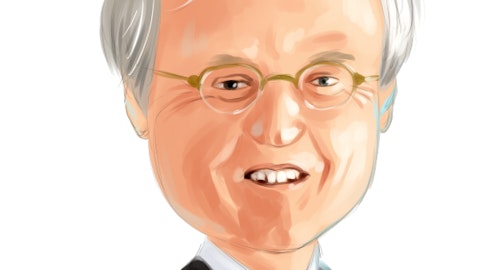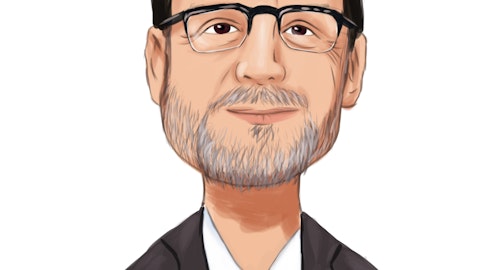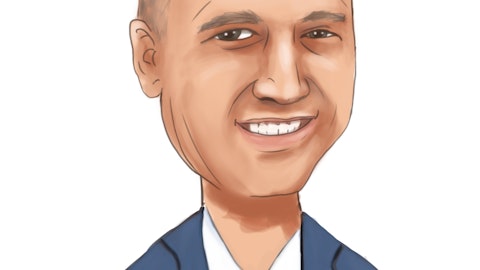Tani Girton: Matt, I’ve pulled those spot rates for you. So for the month of December, the cost of deposits was 8 basis points and the net interest margin was 3.27% tax equivalent.
Matthew Clark: Thank you.
Tim Myers: Did I fully answer your question Matthew on the real estate?
Matthew Clark: Yes, you did. Thanks very much.
Tim Myers: You’re welcome.
Operator: Thank you. We’ll get to our next question on the phone line from the line of Jeff Rulis from D.A. Davidson. Please go right ahead with your question.
Jeff Rulis: Thanks, good morning.
Tim Myers: Good morning, Jeff.
Tani Girton: Good morning.
Jeff Rulis: Looking at the three commercial real estate payoffs, were those legacy Bank of Marin credits or acquired through American River?
Tim Myers: Are you talking about the ones that reduce non-accruals?
Jeff Rulis: Yes.
Tim Myers: Yes, those were legacy Bank of Marin. So we had one earlier, the $7 million one we’ve referred to before. That was a longstanding non-accrual of Bank of Marin. And then the other small ones related to a similar borrower were legacy Bank of Marin. If you’re talking about the payoffs overall, there was a chunk related to acquired loans.
Jeff Rulis: Got you. And just would you – some of that success or movement, would you chalk it up to timing or was there any shift in aggressiveness seeing kind of potentially what could be ahead economically speaking, was there a, let’s chase some of these down just trying to get a sense for if it was timing or some self-directed things in-house?
Tim Myers: Yes, it’s partially both. So the one larger loan that I just referenced, that’s been on the books for long time. If you’re talking about the smaller ones, we were very proactive in – resolving that situation with the borrower and certainly that was in the back of our minds that this external environment is not going to get any better. And so, we worked with them closely and came to a mutually agreeable solution. So there’s no question that this environment played into that.
Jeff Rulis: Okay. Hopping over to the 2023 expense growth rate, how should we think about maybe year-over-year figure given the branch consolidation savings that are expected to be a partial offset, just not specific and/or just the puts and takes of how you see expenses in ’23?
Tani Girton: So I’d say we had quite a few vacancies in 2022. We’ve resolved a lot of that. So that’s an upward push. However, and then also, we plan to invest some of the savings from the branch closures and other efficiencies that we realize into some of our strategic initiatives. So, but on the other hand, we had very few expenses related to the merger and conversion in 2022. So I’d say in general, you’re probably going to see kind of a normal uptick in expenses, but there are a lot of moving parts in both directions that can counterbalance each other. We do also have sort of the typical first quarter increase associated with bonuses and 401(k) contributions that go along with those bonuses.
Jeff Rulis: Yes, okay. Maybe a last one just on the payoff activity – can you get a sense that any of that was sort of year-end timing driven or and/or do you have any visibility that payoffs could subside going forward, especially given where rates are and where they’ve been?
Tim Myers: Yes, we do. Well, I’ll start with that last part. We do think it’s going to subside. If you look at the full year trend, asset sales have been typically one of the largest components. That was actually down year-over-year. Cash payoffs were deleveraging that was pretty flat. We did have a larger jump in payoffs from project completions and Park as we had $125 million construction loan payoff that was very lumpy. The biggest component that or the largest increase category wise year-over-year was just third-party refinancing and that – refinancings and that jumped up relatively significantly. But over half of that were acquired loans where we didn’t have the appetite to refinance or continue on with those loans. And so to your question about timing yes, the intense rate competition we had earlier in the year drove a lot of activity and really accelerated that.
Those were undoubtedly things that would have come to life and happen anyway, but having banks compete over those, kind of things, force that decision early on. So, there was a timing aspect of that, but that was over half of those – third-party refinancing, so a little bit of a long-winded answer. But yes, we have every reason to believe that, that trend will subside both in terms of one, those – assets being off the books, but two, the rate environment overall. And we did, like I said see a couple of those key categories actually decline.
Jeff Rulis: Okay. So I guess, consistent with your initial comments, sort of a strong year of originations, but you did quite a bit of de-risking under the hood, if you will, at least – for our eyes, there was a bit of churn in there that you feel better about the quality of the book?





